'It's really tough': SMRT workers persevere round-the-clock despite morale dip from train disruptions
SINGAPORE: When train disruptions occur, the morale of SMRT's rail maintenance team takes a hit.
“Our first reaction is to probably feel a bit demoralised, or even shaken because of the issue or the incident,” Mr Low Choon Keong, SMRT's director of rolling stock, told reporters during a media visit showcasing overnight rail maintenance.
The visit came in the wake of recent high-profile disruptions, including a six-day service halt on the East-West Line between Jurong East and Buona Vista stations last September. In that incident, a defective axle box fell onto the tracks, causing a bogie to derail between Dover and Clementi stations.
The cause of the incident is still under investigation.
More recently, the Land Transport Authority announced it was probing the root cause of three separate MRT disruptions that took place within a week.
These incidents affect the staff emotionally but their immediate priority is to handle the issue and rectify it as soon as possible, Mr Low said. “After the rectification, we will definitely talk to staff or whoever needs encouragement or additional counselling … we will ensure that everybody’s mentality and morale will be taken care of,” he said.
“For each and every issue and learning moment, we will distil out all these important lessons learned, and then we will improve from there,” he said.
Despite the tough work environment – from limited time to complete a job to harsh conditions – the maintenance crew remains committed.
"The life of a maintenance staff in SMRT is tough, it’s really tough,” Mr Low quipped.
“We have to work within the constraints of the environment and do the task at hand, as well as be competent in handling the various machinery so that we can carry out our tasks efficiently.”
He hopes the public understands the confines and limitations that make rail maintenance especially tough.
To see just how challenging the job is, the media joined the SMRT maintenance team during an overnight rail replacement on Mar 11.

REPLACING RAILS IN THE DEAD OF NIGHT
At 1am, workers assembled at Marina Bay station to replace an 18m stretch of rail with a chip in its base.
The team has to move quickly – they only have a narrow three-hour window between 1.30am and 4.30am to get the job done. This gives enough buffer time after the last train and before the first train gets on the tracks.
A diesel-powered locomotive brought in the new rail and equipment, while workers walked 400m into the tunnel to the site.

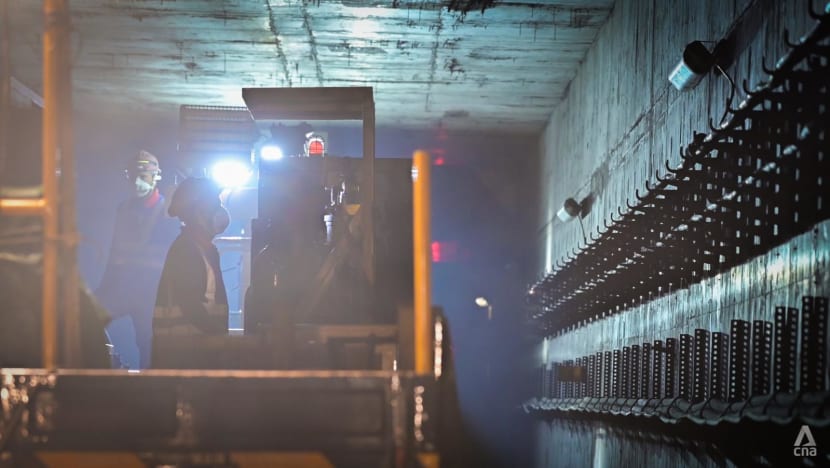
Sparks flew as the damaged rail was sawed out. A rail changer lifted it out and lowered the new, one-ton rail into place. After alignment, teams welded the ends using thermic welding and smoothened the joints by grinding, so that trains can pass safely over the tracks.
The sense of urgency among the workers was almost palpable.
The team of 14 that was hard at work is not the only one - there are about five such teams, comprising between 12 to 18 workers each, replacing worn or defective rails along the North-South and East-West Line each night.
With 400km of rails on both train lines, such replacement work is an everyday affair - as long as trains keep running.
Through the entire rail replacement process, the movements of the workers were quick and decisive. Some ran back and forth to communicate and grab different tools to complete their tasks.
Manager of track renewal at SMRT, Mr Shazni Jaffar, said that with a short three-hour window, time is of the essence.
“How do we manage it? We have strict procedures in place to make sure that our works are carried out safely and of course, timely, so that the revenue service will not be delayed,” he said.
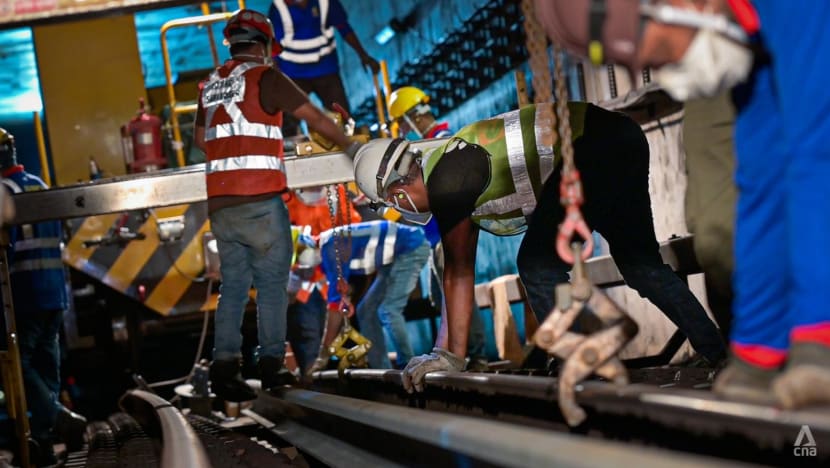
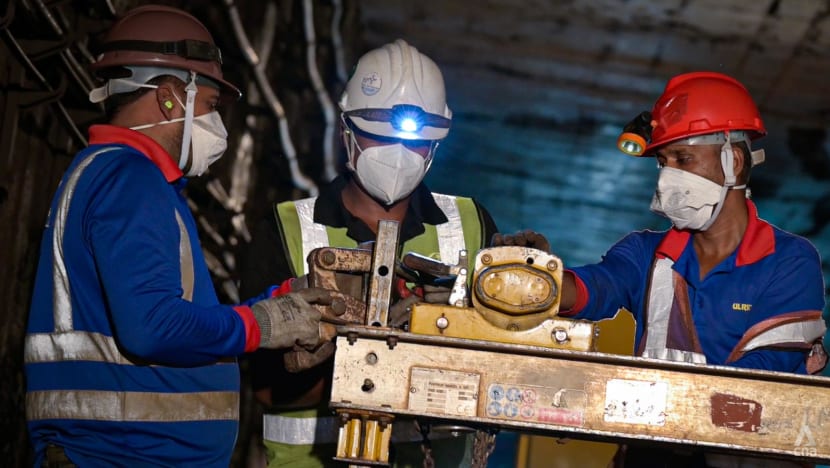
How are defects spotted?
This is the job of patrollers, who manually scan sectors of tracks both underground and above ground in three-, four-, or seven-day cycles.
Armed with tools such as a torchlight and mirror, they patrol 4km to 5km stretches of tracks a night in pairs, also within the hours of 1.30am to 4.30am.
There are also heavy machines that use ultrasound to detect cracks and other defects on the tracks. However, some rail chips, such as the one being repaired on Mar 11, cannot be detected by the machine as it is at the base of the rail.
That is where the experienced eyes of a patroller are needed.
MAINTENANCE OF TRAINS
The work does not end with the rails. At Bishan depot, overhauls are conducted on the 144 trains on the North-South and East-West Lines. These overhauls are done on each train every four to five years based on utilisation.
Components like couplers – which connect and stabilise train cars – and bogies, or the wheel assemblies, are dismantled, inspected and tested.
The overhaul of the bogie includes a check for deformations on the bogie frame, as well as the replacement of defective wheels if necessary.
The maintenance of the bogies are crucial to the functioning of the trains, said assistant engineer at SMRT, Mr Eu Puay Soo.
“The wheels are what holds (the trains) on the track to make them run,” he said.
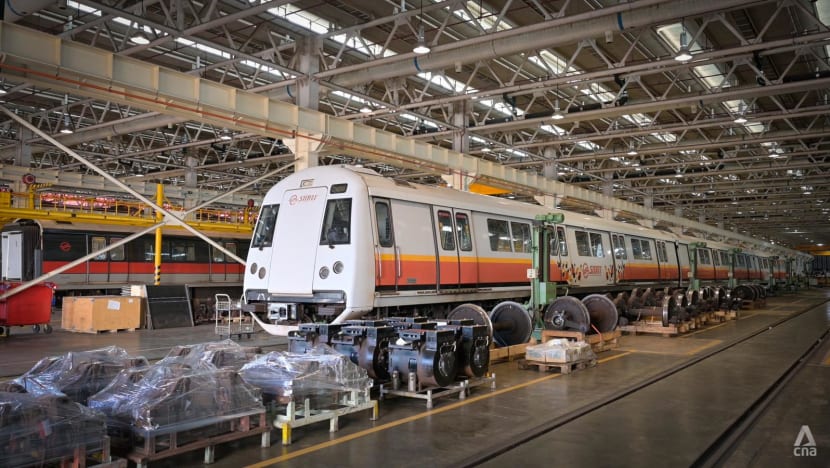
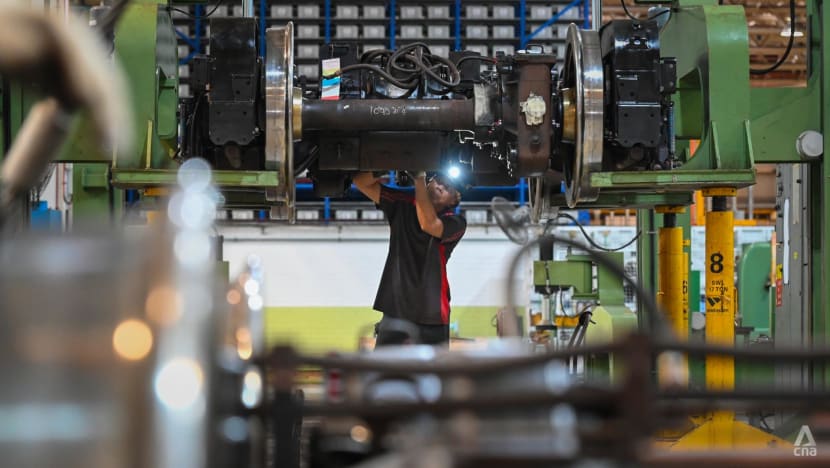
A CALL FOR UNDERSTANDING
While this work often goes unnoticed, Mr Low hopes the public recognises the effort behind each train ride.
“To the commuter, taking the trains seems to be a very simple affair, (to) just go in the train and come out,” he said. But a simple train journey takes “a big team effort behind the scenes”.
“(This is) not just the train itself, there’s a lot of things that goes on underneath, and what (a commuter) sees and touches is just the tip of the iceberg.”
The workers ensure that everything from the tracks, air-conditioning, fire protection systems and every part of the train operates safely, he said.
“So, it’s a huge team effort behind the scenes to deliver this travel comfort to all the commuters.”
免責聲明:投資有風險,本文並非投資建議,以上內容不應被視為任何金融產品的購買或出售要約、建議或邀請,作者或其他用戶的任何相關討論、評論或帖子也不應被視為此類內容。本文僅供一般參考,不考慮您的個人投資目標、財務狀況或需求。TTM對信息的準確性和完整性不承擔任何責任或保證,投資者應自行研究並在投資前尋求專業建議。
熱議股票
- 1
- 2
- 3
- 4
- 5
- 6
- 7
- 8
- 9
- 10